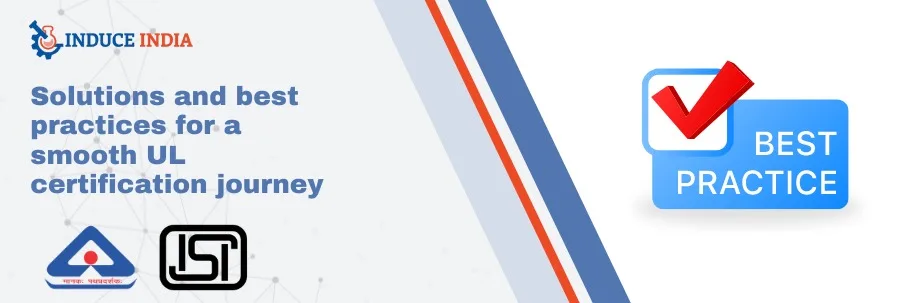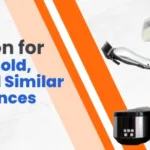Underwriters Laboratories (UL) or UL certification is a nonprofit organization founded in 1894, working on issues to promote safe living and working environments by advancing safety science. UL laboratories are now a trusted authority that ensures product safety is maintained, and certification is acquired honestly across various industries worldwide. Acquiring a UL certification is neither difficult nor easy. The complexity level is moderated when compared to BIS certification. In other ways, manufacturers may get stuck somewhere in the middle if the process is not taken seriously. On the other hand, things will become easier with expert guidance and full knowledge. This blog will discuss some of the best solutions and practices to make your UL certification journey smooth like butter.
5 Solutions and Best Practices for a Smooth UL Certification
If you are preparing to navigate the UL certification journey, then you need to ensure that the process goes smoothly. Below are the key solutions and best practices to help businesses achieve UL certification without any hurdles.
1. Understand the Scope and Requirements of UL Certification
The very first thing that manufacturers need to understand is the importance of UL certification for your product or what UL certification means for your product. UL offers various certifications based on products, types, industries, and safety requirements. For example: the UL 94 test is used for flammability standards in plastics, while the UL 60950 applies to IT equipment.
Best practices:
As an informed manufacturer, thoroughly research which UL standards apply to your product, before starting the certification process. This will eliminate the risk of choosing the wrong product category and applying for the wrong certification. What you need to do is:
- Identify the specific UL standards and UL certification requirements for your product early
- Conduct a thorough research and gap analysis of your product’s current state and necessary UL requirements so that you can comply with the latter.
- You can seek professional help or speak directly to the UL representative to get clarity.
2. Design for Compliance Early in Product Development
The main cause of delta or failure in obtaining UL certification is the delay in meeting the product safety requirements in the developmental phase. This leads to time-consuming and expensive product modification so that the products can comply with UL standards.
Best Practices:
Remember to incorporate UL safety standards into the product from the start of its designing and manufacturing process. By following this step, you will not only save time, money, and effort but will also pass the test without requiring major changes. What you should do is:
- Work closely with your designers and engines to incorporate UL certification requirements and safety features into the initial product design.
- To increase efficiency, use those materials and components that already meet the UL certification standards.
- Stay in touch with your consultants and designers to ensure that everything is followed as per the plans and in the right direction.
3. Test your product internally before sending it for UL testing
Manufacturers are always advised to conduct an internal audit and product testing before submitting it to the authorized UL laboratories. It is important to conduct your internal testing because it will help you to identify and resolve any potential compliance issues. To maintain the testing standards, you can use testing conditions used by UL. This will help you to determine your weak areas in advance.
Best Practices:
Conduct an in-house quality assurance product testing procedure and inspection that is similar to the UL testing environment. You can also invest in some types of equipment that can help you in various preliminary tests. What you can do is:
- Environmental stress testing (this includes temperature, humidity, etc)
- Flammability testing (For materials like plastic or insulation)
- Electrical safety testing (for electrical products)
4. Partner with a Certification consultant
Many manufacturers might find the UL certification journey overwhelming can daunting hence they prefer to hire partner consultants that help in streaming the process. These companies come under medium to small-scale businesses that lack in-house expertise and experience with UL.
Best Practices:
Partner with a certification consultant or take assistance from any UL certification consultant. They can guide you through the process, helping you avoid common pitfalls and ensuring that your product meets all necessary standards. What can you do is:
- Choose a consultant with a proven track record of successfully guiding businesses and helping them acquire UL certification.
- Ask the consultant to conduct an internal audit or a pre-segment of your product so that you can determine your weak points and get all the necessary modifications done.
5. Maintain Accurate and Thorough Documentation
Documentation plays an essential role in acquiring any certification. It is important to maintain all the documentation that is accurate and updated. For UL certification, the official will ask for detailed technical files including product specifications, drawings component, lists, and testing records. If you are unable to provide any of these documents or provide the wrong documents, then it can result in delays or rejection of our certification application.
Best Practices:
Keep a track record of all your documents and maintain the same for your product throughout the design, development, and testing process. This documentation should be well-organized and easily accessible in case the UL requests additional information during the certification process. What can you do is:
- Create a checklist of documents that are required beforehand for your specific UL certification.
- Regularly update documentation throughout the products’ lifecycle to ensure that they are accurate.
- Show all the changes and modifications made to your products in the documentation to maintain transparency.
Documentation not only helps in acquiring the UL certification process but also helps in establishing accountability and traceability within your team
Conclusion
In conclusion, UL certification is important for various manufacturers depending upon their requirements. It is not that difficult to obtain the same. However, many mistakes made during the process make the entire process lengthy, frustrating, and costly. Following the above steps can make your UL certification a lot easier even if you have no idea about acquiring the UL certification. With these best practices and solutions, you can simplify the path to UL certification, boosting your product’s credibility, safety, and marketability.
If you are looking for a partner who can be your guide in your UL certification journey then you can consider Induce India, a company that helps domestic and foreign manufacturers in getting BIS certifications and other certifications as well. Check out their services section to quickly get their consultation and assistance.



